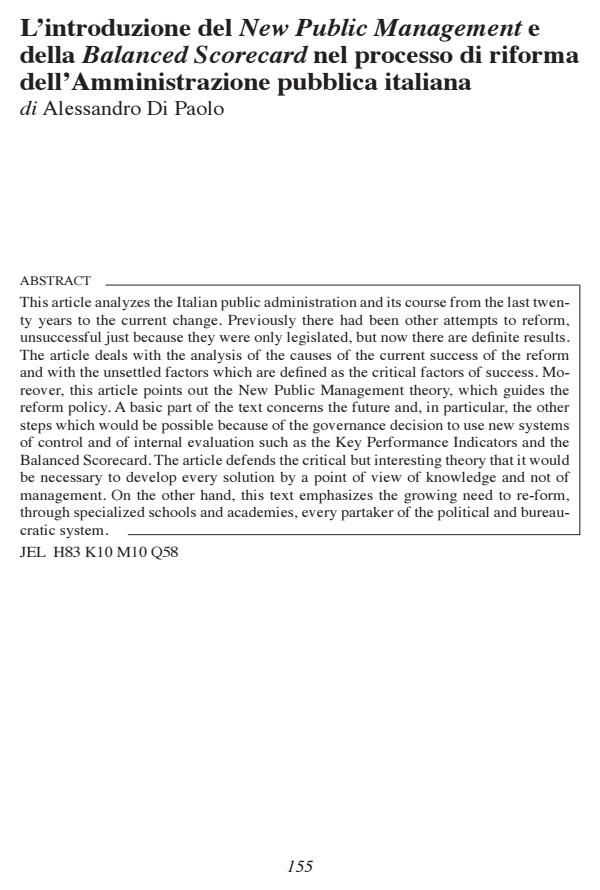L’introduzione del New Public Management e della Balanced Scorecard nel processo di riforma dell’Amministrazione pubblica italiana
Journal title ECONOMIA PUBBLICA
Author/s Alessandro Di Paolo
Publishing Year 2008 Issue 2007/3-4
Language Italian Pages 25 P. 155-179 File size 327 KB
DOI
DOI is like a bar code for intellectual property: to have more infomation
click here
Below, you can see the article first page
If you want to buy this article in PDF format, you can do it, following the instructions to buy download credits

FrancoAngeli is member of Publishers International Linking Association, Inc (PILA), a not-for-profit association which run the CrossRef service enabling links to and from online scholarly content.
This article analyzes the Italian public administration and its course from the last twenty years to the current change. Previously there had been other attempts to reform, unsuccessful just because they were only legislated, but now there are definite results. The article deals with the analysis of the causes of the current success of the reform and with the unsettled factors which are defined as the critical factors of success. Moreover, this article points out the New Public Management theory, which guides the reform policy. A basic part of the text concerns the future and, in particular, the other steps which would be possible because of the governance decision to use new systems of control and of internal evaluation such as the Key Performance Indicators and the Balanced Scorecard. The article defends the critical but interesting theory that it would be necessary to develop every solution by a point of view of knowledge and not of management. On the other hand, this text emphasizes the growing need to re-form, through specialized schools and academies, every partaker of the political and bureaucratic system.
Alessandro Di Paolo, L’introduzione del New Public Management e della Balanced Scorecard nel processo di riforma dell’Amministrazione pubblica italiana in "ECONOMIA PUBBLICA " 3-4/2007, pp 155-179, DOI: